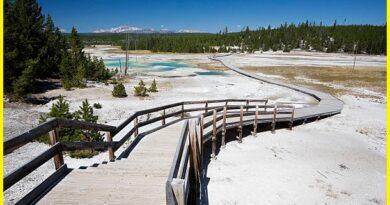The Great Himalayas: A Journey Through Peaks and Valleys
The Great Himalayas
The Great Himalayas, or the Greater Himalayas or Himadri, form one of the four parallel sub-ranges of the Himalayan mountain system. This range, the highest in altitude, stretches approximately 2,300 km from northern Pakistan to Arunachal Pradesh in India, traversing through China, Nepal, and Bhutan. With an average elevation of 6,100 meters, it hosts many of the world’s tallest peaks, including the eight-thousanders and Mount Everest, the planet’s highest summit. The Great Himalayas are Composed primarily of granite rocks and characterized by permafrost, the range is home to numerous glaciers, such as the Gangotri, Khumbu, and Satopanth Glaciers.
Geology of Himalaya
The geology of the Himalayas represents one of Earth’s most striking examples of mountain formation, shaped by powerful tectonic forces and further sculpted by weathering and erosion. Stretching over 2,400 km, from the Namcha Barwa syntaxis in the east to the Nanga Parbat syntaxis in the west, this majestic range is the product of an ongoing progeny the collision of the Indian Plate with the Eurasian Plate.
The Himalaya-Tibet region plays a critical role in global hydrology, providing freshwater to more than one-fifth of the world’s population and contributing a quarter of the global sedimentary budget. Geographically, the range boasts several superlatives: the highest rate of uplift (nearly 10 mm/year at Nanga Parbat), the greatest topographic relief (8,848 meters at Mount Everest, or Chomolangma), some of the highest erosion rates (2–12 mm/year), and the largest concentration of glaciers outside the polar regions. These glaciers, along with the snow-covered peaks, have earned the Himalayas their name, derived from Sanskrit, meaning “the abode of snow.”
Also read- Chauli Ki Jali: A Trek to Mukteshwar’s Most Scenic Cliff
Geography of Himalayas
The Himalayas, one of the most iconic mountain systems on Earth, span across South Asia, forming a massive arc that influences the region’s geography, climate, and culture. The Himalayas stretch over five countries: India, Nepal, Bhutan, Pakistan, and China (Tibet). They run in a crescent shape from the Indus River in the west to the Brahmaputra River in the east.
Length and Width:
Length: Approximately 2,400 km.
Width: Varies between 150 to 400 km.

Sub-Divisions
The Himalayas are divided into four main parallel ranges from south to north:
Shivalik Hills (Outer Himalayas): Lowest and southernmost range.
Elevation: 900–1,200 meters.
Composed of sedimentary rocks, with fertile valleys like the Doon Valley.
Lesser Himalayas (Middle Himalayas):
Elevation: 2,000–5,000 meters.
Includes famous hill stations like Shimla, Darjeeling, and Mussoorie.
Rich in forests and pasture lands.
Great Himalayas (Inner Himalayas or Himadri):
The highest and northernmost range.
Average elevation: 6,100 meters.
Home to towering peaks like Mount Everest, Kanchenjunga, and Annapurna.
Contains glaciers such as Gangotri, Khumbu, and Zemu.
Trans-Himalayas:
Located beyond the Great Himalayas.
Includes the Karakoram Range and Ladakh Range.
Features arid, cold desert-like terrain, such as in Ladakh and Tibet.
Mount Everest
Mount Everest, locally known as Sagarmatha in Nepal and Qomolangma in Tibet, is the world’s highest mountain above sea level. It is situated in the Mahalangur Himal sub-range of the Himalayas, with the China–Nepal border running directly across its summit. Its official elevation of 8,848.86 meters was confirmed in 2020 through a joint survey conducted by China and Nepal.
Everest attracts climbers from around the world, including seasoned mountaineers. The mountain offers two primary climbing routes: the southeast route in Nepal, commonly referred to as the “standard route,” and the northern route from Tibet. Although the standard route does not involve significant technical climbing, it poses serious risks, including altitude sickness, extreme weather, high winds, avalanches, and the treacherous Khumbu Icefall. As of May 2024, Everest has claimed the lives of 340 climbers, with over 200 bodies remaining on the mountain, unrecovered due to the perilous conditions.



